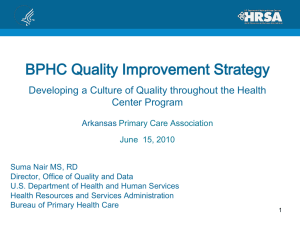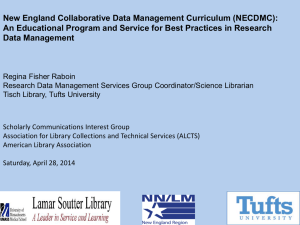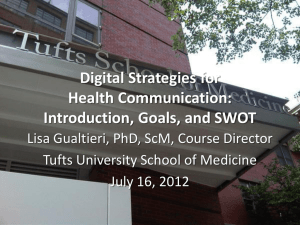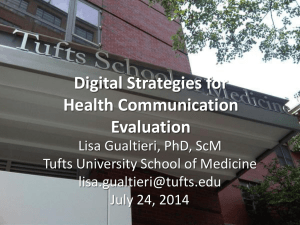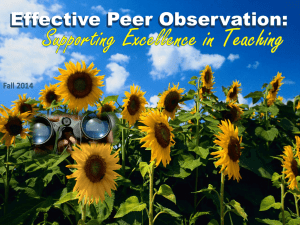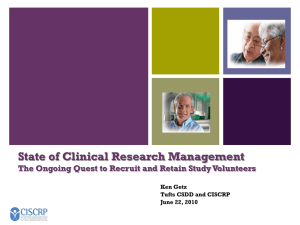Presentation 1 - National Healthy Homes Conference
advertisement
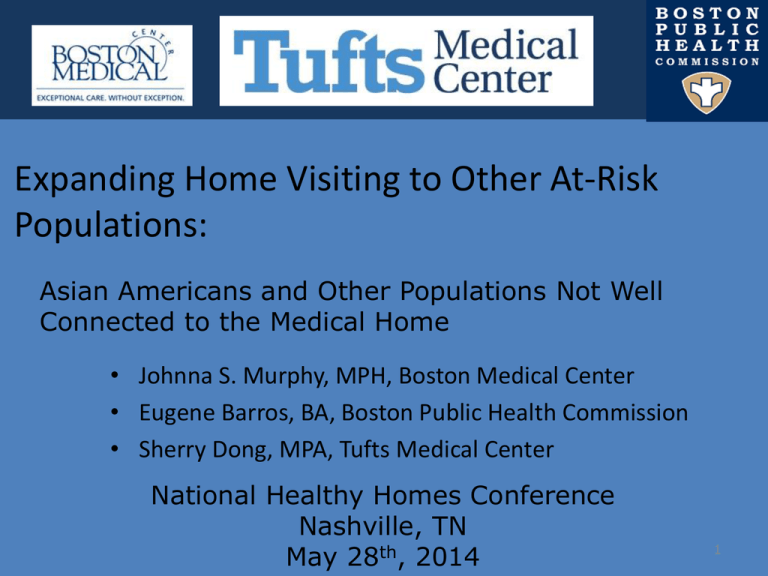
Expanding Home Visiting to Other At-Risk Populations: Asian Americans and Other Populations Not Well Connected to the Medical Home • Johnna S. Murphy, MPH, Boston Medical Center • Eugene Barros, BA, Boston Public Health Commission • Sherry Dong, MPA, Tufts Medical Center National Healthy Homes Conference Nashville, TN May 28th, 2014 1 1. Engage & leverage culturally specific neighborhood and community partnerships 2. Train inspectors 3. Early Warning System (to assist tenants in maintaining their housing) 4. Healthy Homes for Children with asthma in high risk populations (education & interventions) 5. Landlord Engagement and legal advocacy 2 • How can asthma home visiting programs (delivered by a Community Health Worker) reach underserved populations? • How do we engage families who are hard to reach, such as those not connected to a medical home or those who are linguistically isolated? • How do we retain these families within a program? 3 Evaluate two models of recruitment for an asthma CHW home visiting program: • Tufts Medical Center (Tufts MC) targeted Chinese through Tufts MC • BPHC targeted families who might not have a medical home by recruiting through housing support programs Funded by HUD and EPA: Primary Grantee=Boston Public Health Commission, with support from Boston Medical Center and Tufts MC 4 What is a CHW? American Public Health Association: Is a trusted member of, or deeply understands, the community served Is a liaison between health and social services and the community A CHW builds individual and community capacity through: Outreach Community education Informal counseling Social support Advocacy BPHC CHW Nathalie Bazil demonstrates proper use of spacer in Boston home 5 CHWs and Asthma Home Visits • CHWs deliver asthma and medication education in the home • CHWs offer advice and tools for reducing asthma triggers • CHWs provide referrals and advocacy • Studies support effectiveness of multicomponent home visit interventions in improving asthma outcomes and reducing urgent care use. 6 • CHW asthma home visiting programs have historically been successful in Boston • Evidence supports strong clinic integration and communication between families, CHWs, and providers • Challenges include recruiting and retaining hard to reach families • Those not connected to a clinic or medical home • Those linguistically or culturally isolated from providers 7 • BPHC utilized trusted community and housing partners and integrating referral into existing systems: • Breathe Easy at Home-a web based system that allows health care professionals to directly refer to inspectional services • Metropolitan Boston Housing Partnership-a city wide Section 8 administrator that reaches thousands of low income tenants each year • These programs referred families to BPHC for a BPHC CHW delivered home visiting intervention 8 • Asian immigrants tend to underutilize health care services • often lack the information necessary to practice preventive health maintenance. • cultural differences and linguistic barriers, financial concerns, such as lack of health insurance. • > 50% of Boston Chinatown residents are non- or limitedEnglish proficient 9 • part of The Asthma Prevention and Management Initiative launched by Tufts MC and the Floating Hospital for Children • aims to improve the outcomes of children with asthma and decrease utilization of acute care services for asthma-related problems. • Families were recruited through Tufts MC pediatric clinics (strong ties to the medical home) • CHW and program manager was from the community and understood culture and local resources • CHW fluent in Cantonese, Mandarin, and English • But what about families not connected to a medical home?10 CHWs conducted surveys and environmental assessments: • environmental triggers (measured by dust, mold, pests, pets, smoking, and chemical use) •Asthma Control Test -health care utilization -quick-relief and controller use -symptom days •Perceived Stress Scale 11 Both Tufts MC and BPHC CHWs provided the same intervention: • 3 protocol defined home visit interventions and 1 follow up phone call • support and education on home maintenance (including house cleaning) • pest control education and IPM services • environmental tobacco smoke education • Supplies (HEPA vacuum, cleaning kit, traps, allergen blocking mattress covers) • connected children and families to needed medical treatment and case management 12 60 50 50 40 40 30 Total Enrolled 34 26 26 29 20 Completed 3 visits Completed 6 month Follow Up 10 0 BPHC Tufts MC Number of families enrolled, completed intervention, and completed follow up by site 13 BPHC % (n=50) Tufts MC % Combined % (n=32) (n=82) Black 70 13 48 Asian 2 81 33 White 18 3 12 NH/PI 0 3 1 Other 10 0 6 Race 14 English Haitian Creole Spanish Portuguese Cantonese Toisanese Mandarin Vietnamese BPHC% (n=50) 90 4 4 2 0 0 0 0 Tufts MC% (n=32) 23 0 0 0 59 3 13 3 Combined % (82) 63 2 2 1 23 1 5 1 15 BPHC % (n=30) 2 Tufts MC% Combined % (n=32) (n=62) 13 6 12 22 16 14 34 22 40 13 29 College, Grad or 12 Post Grad 13 12 Less than 8th grade Some High School High School or GED Some College 16 A score of 19 or less indicates not well controlled asthma 25 20 15 BPHC Tufts MC 10 Combined 5 0 Visit 1 Visit 2 Visit 3 6 month Follow up 17 100 80 60 BPHC Tufts MC 40 Combined 20 0 Visit 1 Visit 2 Visit 3 Percentage of Families with Asthma Action Plan by visit 18 100 80 60 40 BPHC 20 Tufts MC Combined 0 19 100 80 60 BPHC 40 Tufts MC Combined 20 0 Visit 1 Visit 2 Visit 3 Percentage of families with pests by visit 20 100 80 60 BPHC 40 Tufts MC Combined 20 0 Visit 1 Visit 2 Visit 3 Percentage of families with pets by visit 21 100 80 60 BPHC 40 Tufts MC Combined 20 0 Visit 1 Visit 2 Visit 3 Percentage of families with smoking allowed in home by visit 22 Percentage of families with mold by visit 23 Percentage of families with dust by visit 24 100 80 60 BPHC 40 Tufts MC Combined 20 0 Visit 1 Visit 2 Visit 3 Percentage of families who use abundant chemicals by visit 25 6 5 4 BPHC 3 Tufts MC Combined 2 1 0 Visit 1 Visit 2 Visit 3 A sum of total triggers was calculated (pests, pets, smoking, mold, dust, and chemicals). Average Trigger Scores by Visit 26 • BPHC was successful in recruitment • Fewer follow-up visits but 80% completed six month follow-up. • Many BPHC participants self-referred • High levels of ED and hospitalization at baseline • Recruitment through housing and public health should be considered. 27 • Tufts MC was successful in retaining families, with 76% completing intervention, as opposed to 52% of BPHC •Cultural and linguistic competence •Families seeing value in the APMI program •Interdisciplinary APMI team •Tufts MC clinic base of operations for CHWs/APMI staff 28 • Both groups saw positive results • Very different at baseline • Reduced urgent care utilization, improved ACT scores, and lower environmental triggers • Strong cultural understanding, ability to act as health care bridge • Both needs targeted programs 29 • Despite universal health care in Massachusetts, many of the BPHC subjects had very poor asthma control but no access to medical home. • Willing to self identify • How do we continue to reach these families for home visiting and connect them to clinical care? • BPHC families possibly were more stressed, had worse health outcomes, etc. making keeping appointments more difficult? • How do we ensure successful completion of program, once recruited? 30 HUD Demonstration Grant MALHH-0207-09 Environmental Protection Agency Megan Sandel, MD, MPH at Boston Medical Center Margaret Reid, RN and Nathalie Bazil at Boston Public Health Commission May Chin, RN and Brenda Situ at Tufts Medical Center 31
